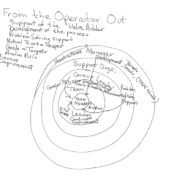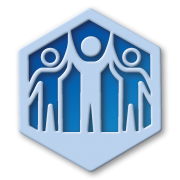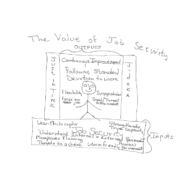The Role of HR in a Continuous Improvement Organization: Introduction
(Reposted by permission of the author from LinkedIn)
HR in continuously improving organizations believe that productive change can be based on a logical construction of the situation with an image of a better way that is humane. It starts with an honest look at the driving force in organizational life. The most significant driving force is the role that competition plays in the changes necessary of organizations. It is always hoped that as a matter of strategy, competition is a force to be considered but the aim of differentiation is to beat the competition.
Competition can make us stronger or it can destroy us. Competition can serve as a catalyst for improvement that ultimately makes us more competitive and thus provide us with the ultimate payback, job security. Every employee is concerned with job security even after financial security is attained. The job is the basic unit of organizational life and provides each employee with not only a financial return, but with a social structure to engage the employee in positive interaction. The natural reaction when the job is threatened is for the worker to move very quickly to demonstrate that their job is important. For this reason, change for change sake is not desirable. Operating as if a real threat exists makes change more difficult due to credibility reasons. There can only be a few burning platforms before members doubt the ability of leadership to run the organization. To further inflame the problem encountered, to create a culture, we have made numerous attempts to implement a new way yet have sustained so few that the worker is naturally cynical of change. The first sign of change elicits a reaction that prohibits that change from progressing naturally. HR’s role is to monitor all anticipated changes and provide support while enabling change to be constant for the culture. This happens because HR has the truest perspective on the relationship between the operations and the operating principles. The role of HR is wide and diverse and complicated. The result of any change must be understood and easily implemented. If it is not, the organization will suffer and job security will be diminished.
Once having understood the true nature of continuous improvement, most organizational leaders become zealots for change. However, leaders also tend to become proponents for the fastest pace making it inconsistent with the true nature of change for most individuals. The results are expected immediately. Unfortunately, the true rate of change desired is directly related to the level of comfort achieved by those most affected by the change. Going too fast or too early can at best delay any implementation of continuous improvement; at worst it can halt the change effort completely. Even though operations are obligated to want the change rapidly, it takes a consistent view of how the change will evolve to make the expectations of sustainment possible.
Leadership must first have a true understanding of work as a system and then ascribe to a plan that allows the people system to engage at a pace suited to gaining commitment. Commitment is defined as a willingness to suffer some inconvenience to accomplish something worthwhile. Without commitment, the change effort is seen as an inconvenience and unwillingness ensues. Therefore, allowing commitment time to emerge is critical for the worker to be able to engage in the process of implementation and change to be sustained. HR is expected to have the core expectation for change and coach leadership into change that can be sustained. HR achieves this by understanding the strategy, the annual plan, and the supporting targets.
The ultimate dichotomy emerges when the leadership wants the expected increase in performance immediately and the worker needs time to become committed. How do you achieve balance? The answer lies in establishing the appropriate expectations. From operations comes seemingly appropriate expectations that are usually out of context with the development of the system of interaction for long term stability. HR in its most important role provides the systems perspective and the methods for making those expectations feasible. When coaching operations, the tone is to achieve teamwork. This interaction is based on an understanding of how operations are positively impacted by a deep understanding of how change happens and is supported.
Leadership must be expected to make a small sacrifice in the short run to gain tremendous gains in the future. The worker must be expected to support the change effort, even though they have not realized the benefits. The linking pin for both is trust. If trust is not present, the logic of postponing results is not seen for leadership and the logic of trying something new and uncomfortable is lost on the worker.
Trust must be earned over time. It is the result of having a measure of predictability in the relationship. Talking about it is insufficient. It must be observed. In a situation where the worker does not trust the motives of the leadership, taking one step at a time becomes critical. Each step becomes a demonstration of how the implementation will proceed. Careful planning and evaluation can ensure the steps taken are seen as positive. Some steps can result in achieving gains and some may not. Understanding the ultimate gain to be made supports leadership judgment to take steps that do not result in immediately improved performance but does enhance the level of trust all building to the desired outcomes. In most cases, HR provides the sounding board and the expertise to understand the value of achieving positive change while making desired changes.
Leadership must understand that the whole organization, not just the line worker, will test the implementation to see if it is a true way of doing business or if it is just another “flavor of the month”. These tests usually start out simple. Something is chosen as an issue that is not important but is a small measure of dedication to the process. If you ask employees what would make the implementation go better, they have a response such as “softer toilet paper and brighter light bulbs”. These are not vital issues to them, but it is a test to see if a request that is irritating to leadership is taken seriously. Other tests have to do with issues such as how overtime is handled, how people who have different ideas are treated, how job rotation is handled so the worker takes on less risk learning a new job and how the results of the implementation principles are shared by the worker. A response by leadership that is consistent with the discussion on continuous improvement helps to build trust. Over time, trust is built one decision at a time until the direction is understood and can be committed to. Because too many decisions are made in isolation with complete impunity from leadership, the fact that they are not coordinated generates a significant possibility that there will be inconsistency. HR has the role of ensuring that decisions made impacting the human system are valid for the organizational system as a whole.
As the fabric of trust emerges, it becomes obvious to the workforce “what is in it for them”. The environment is aimed at making them successful. With trust in the changes underway, they can do their best work and produce the highest quality. They are treated with respect and mutual trust. They are communicated to fully. The fabric of trust and performance are built.
Thoughts for reflection
- How do you keep change alive when the natural reaction to it is “push back”?
- HR must earn the respect of the leaders that are necessary for a system-wide perspective on the human system. How would this happen for it to be valid to operations?
- How can leadership maintain and improve trust when change is emphasized?
- What support should HR provide leadership during the change process?

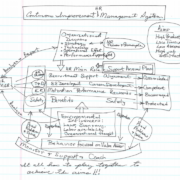 2019 Total Systems Development
2019 Total Systems Development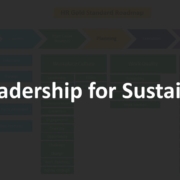 2019, Total Systems Development, Inc.
2019, Total Systems Development, Inc.
 2019, Total Systems Development, Inc.
2019, Total Systems Development, Inc.